If you love the taste of fresh, juicy tomatoes but think you don’t have enough space to grow them — think again! Whether you live in an apartment, have a small balcony, or just a few square feet of garden, tomatoes can thrive beautifully in compact areas with the right care. With clever container choices, proper sunlight, and efficient watering, you can enjoy a bountiful harvest of homegrown tomatoes right from your patio or windowsill.
Here’s your simple 5-step guide to growing tomatoes in small spaces — even if you’re short on room but big on flavor.
Step 1: Choose the Right Tomato Variety
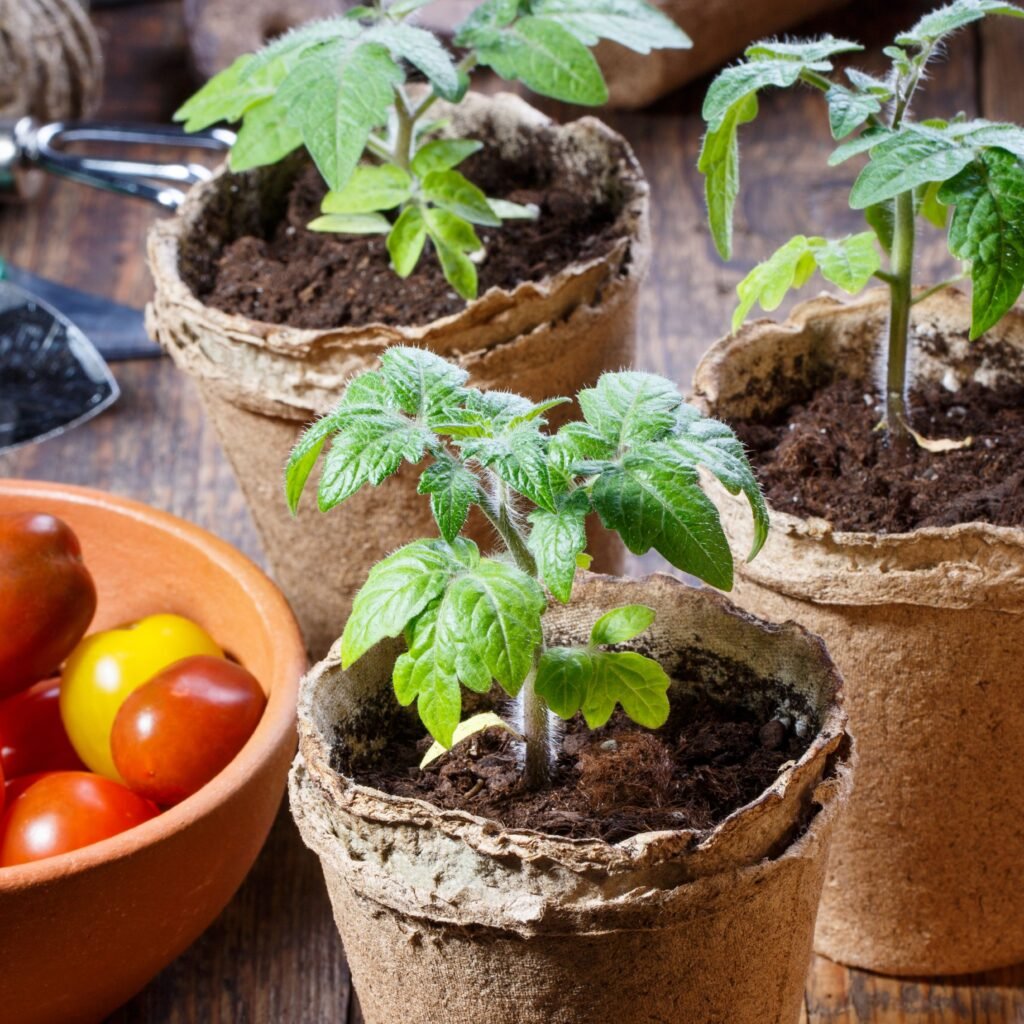
Not all tomato plants are created equal — especially when you’re gardening in tight quarters. The first step to success is selecting varieties that are naturally compact, fast-growing, and high-yielding.
Best Tomato Varieties for Small Spaces
- ‘Tiny Tim’ – A dwarf variety that reaches only about 12 inches in height. Perfect for pots or windowsills.
- ‘Patio Princess’ – Produces medium-sized fruits on compact plants ideal for containers.
- ‘Tumbling Tom’ – A trailing variety perfect for hanging baskets or tall containers.
- ‘Bush Early Girl’ – A determinate type that grows around 2-3 feet tall and produces early, flavorful fruit.
- ‘Balcony Cherry’ – Designed specifically for small urban gardens with a prolific yield of bite-sized tomatoes.
Determinate vs. Indeterminate
- Determinate (Bush-type): Grow to a fixed size, produce fruit all at once, and are easier to manage in containers.
- Indeterminate (Vining-type): Continue growing and producing fruit until frost; need more space and staking.
For small gardens, go with determinate or dwarf varieties that stay manageable and don’t overwhelm your limited space.
Step 2: Pick the Perfect Container and Soil
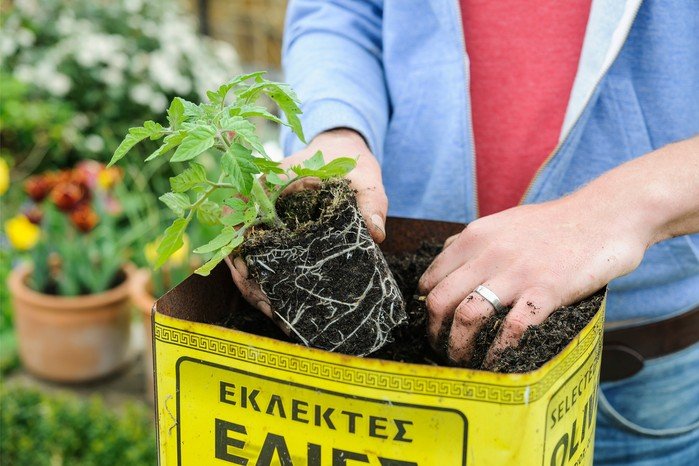
Tomatoes can grow almost anywhere — as long as their roots have room to breathe and the soil drains well.
Container Size and Material
- Choose a container that’s at least 14–18 inches deep and 16–20 inches wide.
- Ensure the pot has drainage holes at the bottom to prevent soggy roots.
- Materials like plastic, ceramic, or fabric grow bags work well because they retain moisture but allow airflow.
- For trailing or cherry tomatoes, hanging baskets or vertical planters can save space while keeping plants off the ground.
Soil Mix
Tomatoes love nutrient-rich, well-draining soil. A good mix includes:
- 60% potting soil
- 20% compost or aged manure
- 20% perlite or coco peat for aeration and moisture retention
Mix in a slow-release organic fertilizer before planting to provide steady nutrients throughout the growing season.
Step 3: Planting and Sunlight Tips
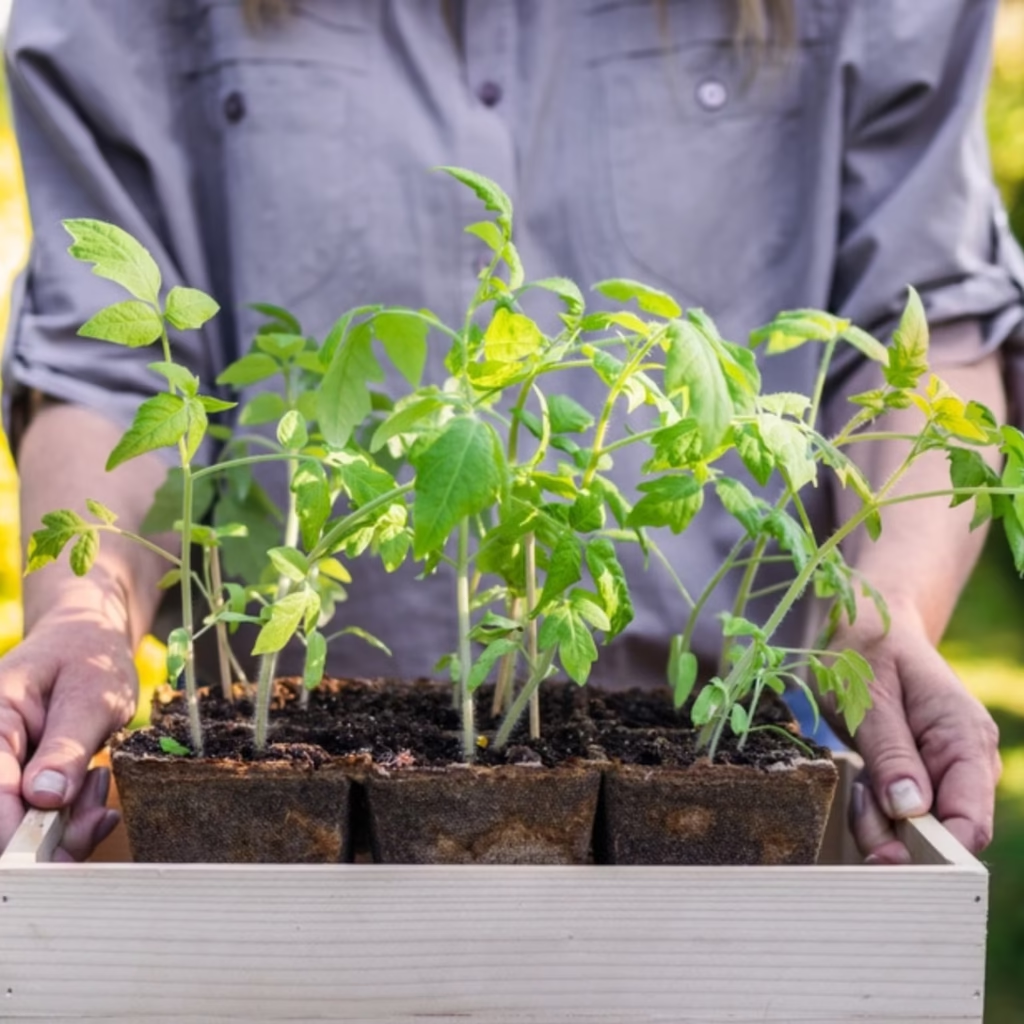
Now that your container and soil are ready, it’s time to plant! Tomatoes are sun lovers, and in small spaces, making the most of available light is crucial.
Planting Technique
- Bury two-thirds of the tomato plant below the soil surface.
This encourages the stem to grow additional roots, giving the plant more strength and access to nutrients. - Space plants at least 18 inches apart if using multiple containers to ensure good air circulation.
Sunlight Requirements
Tomatoes need at least 6–8 hours of direct sunlight daily.
If you’re short on natural light:
- Move containers throughout the day to follow the sun.
- Use reflective surfaces like mirrors or white walls to amplify sunlight.
- Consider using grow lights indoors — LED grow lamps can mimic natural light effectively.
Temperature Considerations
Tomatoes thrive in warm weather — 65°F to 85°F (18°C to 29°C). If it gets too cold, bring your pots indoors or use row covers or mini greenhouses to protect them.
Step 4: Watering, Feeding, and Support
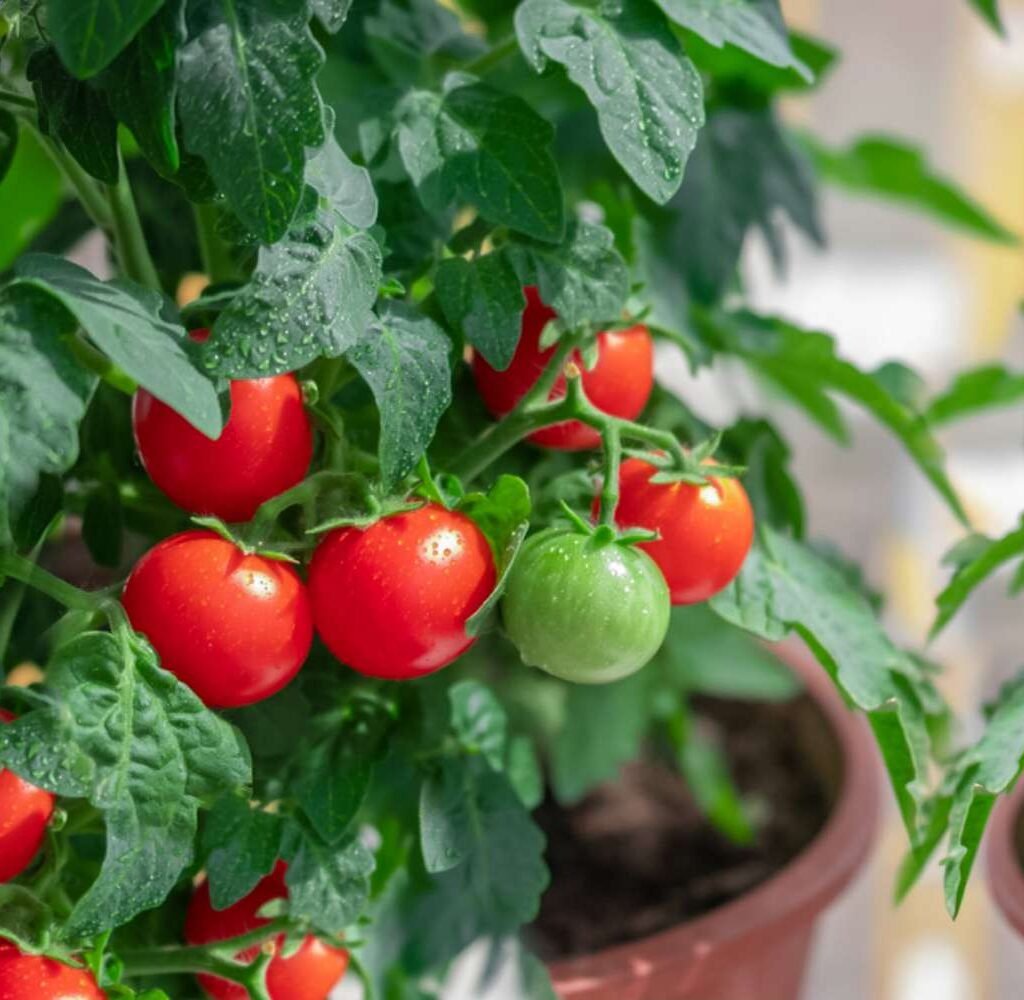
Small-space tomatoes depend heavily on consistent care. Because containers dry out faster than garden beds, proper watering and feeding are essential for healthy plants and juicy fruit.
Watering Tips
- Water deeply but less often. Aim to moisten the entire root zone, not just the top.
- Check the soil daily; if the top inch feels dry, it’s time to water.
- Use self-watering containers or mulch the top of the soil with straw or coconut coir to retain moisture.
- Avoid splashing water on leaves — wet foliage can lead to fungal diseases like blight.
Feeding Schedule
Tomatoes are heavy feeders. Use a balanced, organic fertilizer or tomato-specific liquid feed.
- Every 10–14 days, apply a diluted fertilizer high in phosphorus and potassium for healthy fruiting.
- Add compost tea or seaweed extract monthly for a nutrient boost.
Support Structures
Even compact varieties can benefit from some support.
- Use small cages, bamboo stakes, or trellises to keep stems upright.
- Hanging or trailing varieties can be trained to cascade beautifully from planters or baskets.
Step 5: Pruning, Pollination, and Harvesting
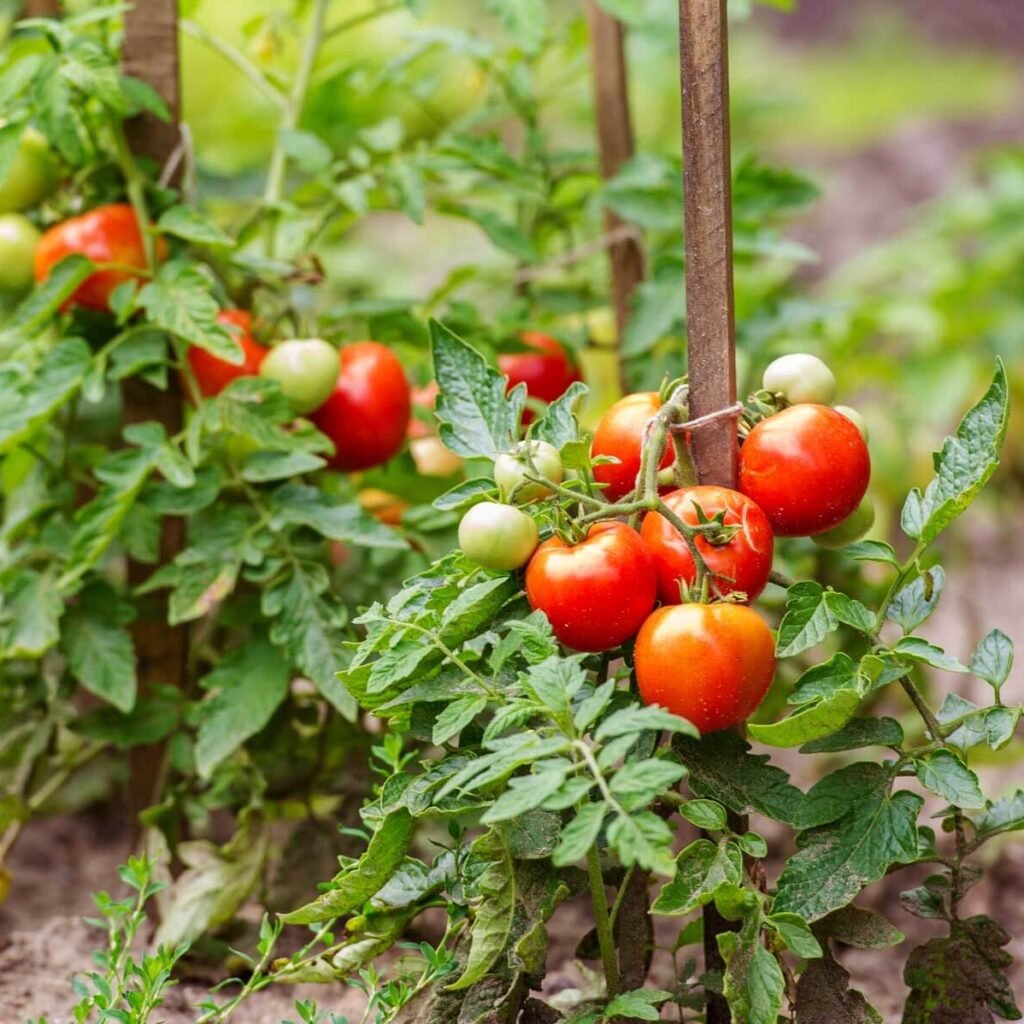
Your plants are growing, but a few maintenance tricks can make a huge difference in yield and quality.
Pruning and Maintenance
- Remove lower leaves that touch the soil to prevent disease.
- Pinch off suckers — small shoots that form between the main stem and branches. This focuses energy on producing fruit instead of excess foliage.
- Regularly inspect plants for aphids, whiteflies, or fungal spots. Treat early with neem oil or insecticidal soap.
Pollination in Small Spaces
If you’re growing indoors or in an area with little wind or pollinator activity:
- Gently shake or tap the flowers every few days to distribute pollen.
- Use a small soft brush or cotton swab to transfer pollen between blooms.
Harvesting Tips
- Tomatoes are ready to harvest when they are fully colored (red, yellow, orange, or pink depending on the variety) and slightly soft to the touch.
- Twist gently or use scissors to avoid damaging the vine.
- Don’t refrigerate freshly picked tomatoes — it dulls their flavor. Instead, keep them at room temperature and enjoy their full sweetness.
Bonus Tips for Thriving Tomato Plants in Small Spaces
- Rotate your containers every few days to ensure even sunlight exposure.
- Companion plant with herbs like basil, chives, or parsley — they deter pests and improve tomato flavor.
- Avoid overcrowding your space. Airflow reduces the risk of mold and disease.
- If your balcony or patio gets windy, use a wind barrier like a screen or railing planter to protect delicate stems.
- At the end of the season, refresh your soil before planting again — tomatoes can deplete nutrients quickly.
Common Mistakes to Avoid
- Overwatering: Leads to root rot and yellowing leaves. Always check soil moisture first.
- Too much fertilizer: Causes leafy growth but few fruits.
- Insufficient sunlight: Results in leggy plants and poor fruiting.
- Ignoring pruning: Leads to tangled vines and reduced airflow.
- Planting too early: Cold soil can stunt growth — wait until temperatures are consistently warm.
Final Thoughts
Growing tomatoes in small spaces is easier than it looks — and incredibly rewarding. With just a few pots, quality soil, and plenty of sunshine, you can transform your balcony or patio into a mini tomato farm. Each bite of a homegrown tomato will remind you that even limited space can produce limitless flavor.
Whether you’re a beginner gardener or an urban dweller dreaming of fresh produce, this 5-step guide proves that anyone can grow vibrant, healthy tomatoes — no backyard required.
So grab your pots, plant those seeds, and enjoy the satisfaction of harvesting your own delicious tomatoes right from your small-space garden!
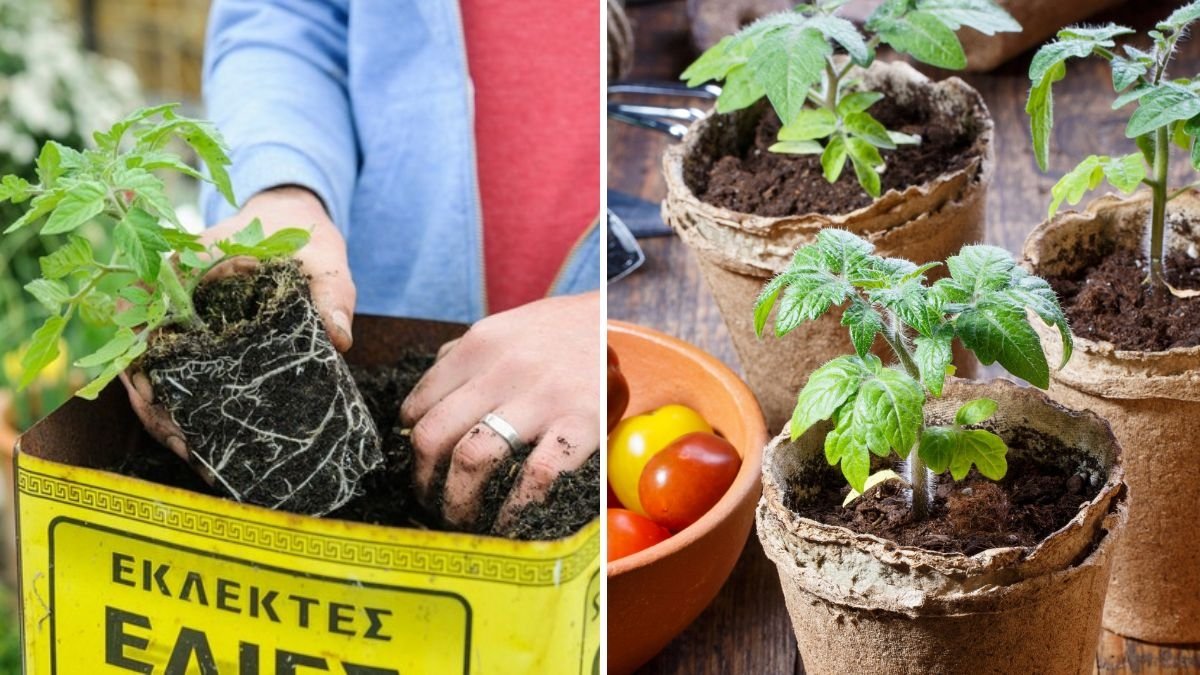




Leave A Comment